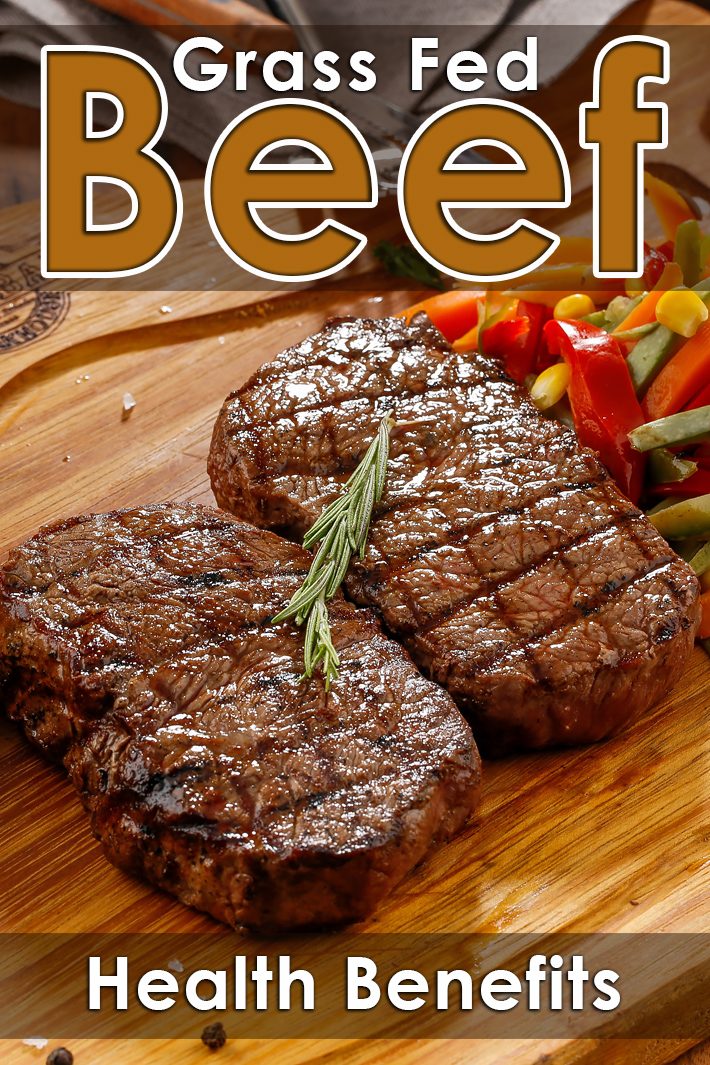
The movement towards grass fed beef is continuously gaining momentum, because more and more people are realizing about the benefits this type of beef offers to human health and the environment. Continue reading to learn what grass fed beef is, how it stacks up against typical beef and where you can find the best sources of high-quality meats in your area.
Why You Should Consider Grass Fed Beef
Grass fed beef comes from cows that are allowed to graze on pasture and consume their natural diet of grass. This situation is different from cows raised in concentrated animal feeding operations (CAFOs), which are fed a processed diet containing grains and even growth-promoting drugs.
Organic grass fed beef production requires more effort and attention to detail, as ranchers have to follow strict guidelines that’ll ensure the meat’s freshness and quality.
Because grass fed cows are grown in more humane conditions, the meat’s quality is superior to conventional beef. The meat also tends to be loaded with more nutrients, without the risks attributed to harmful pathogens that are found in conventional beef (more on this later).
Positive long-term effects of grass fed beef production on the environment must be emphasized too. A study published in the journal Nature Plants sought to discover the benefits of organic versus conventional farming under four key sustainability metrics: productivity, environmental impact, economic viability and social well-being.
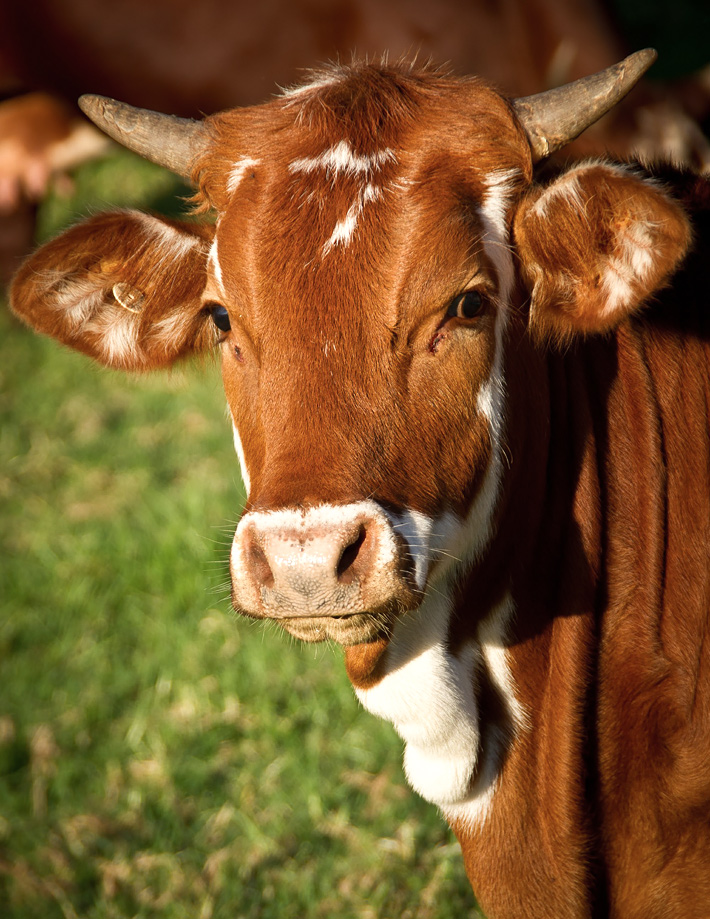
Researchers analyzed data that emerged in the past 40 years, and the results highlighted these positive effects connected to organic farms:
- More profitable and can earn farmers anywhere from 22 to 35 percent more compared to their conventional counterparts
- More environmentally friendly
- Able to produce equally or more nutritious foods with fewer or no pesticide residues
- Can provide unique benefits to the ecosystem
- Can deliver social benefits
Health Benefits of Grass Fed Beef
Beef in general already contains certain nutrients that are good for your body. However, grass fed beef goes above and beyond because it is simply more nutritious, possessing these important components:
- Lower amounts of total fat
- Higher levels of beta-carotene
- Higher in vitamins B1 (thiamin), B2 (riboflavin) and E
- Higher amounts of minerals like calcium, magnesium and potassium, alongside other minerals like iron, zinc, sodium and phosphorus
- Higher portions of total omega-3 fatty acids
- Higher amounts of conjugated linoleic acid (CLA or cis-9 trans-11), a potential cancer fighter
- Higher amounts of vaccenic acid that can be transformed into CLA
- A healthier ratio of omega-6 to omega-3 fatty acids
Grass Fed Beef Versus Grain Fed Beef
Grass fed beef’s benefits do not end with its high nutritional content. If you’re still not convinced why beef from grass fed cows is better, take note of these key points:
- Humane growing methods: Grass fed cows consume their natural diet of grass, since they have been allowed to graze on grasslands during their lifetime. A grass-rich diet consequently boosts the cow’s health and the quality of meat.
- Meanwhile, cows in profit-hungry CAFOs are fattened for slaughter by being fed artificial diets that contained grains, corn, soy,5 growth-promoting drugs and antibiotics. Eventually, this diet altered the bacterial balance and composition in the animal’s gut, resulting in meat that’s tainted with potentially health-damaging bacteria.
- Greater fatty acid composition: As mentioned earlier, grass fed beef contains higher ratios of healthy fats like vaccenic acid, conjugated linoleic acid and omega-3 fatty acids, compared to grain fed cows.
- Fewer amounts of bacteria: Overcrowding of cows in CAFOs is a very common situation that may lead to increased bacterial contamination. Samples of CAFO-grown beef revealed traces of antibiotic-resistant bacteria that may have contributed to the increasing number of antibiotic-resistant disease cases being reported.
- Consumer Reports examined 300 samples of conventionally raised and sustainably produced (including grass fed) ground beef to see if there were traces of five types of disease-causing bacteria: Clostridium perfringens, Salmonella, Enterococcus, Staphylococcus aureus and E.coli (including O157 and six other toxin-producing strains).
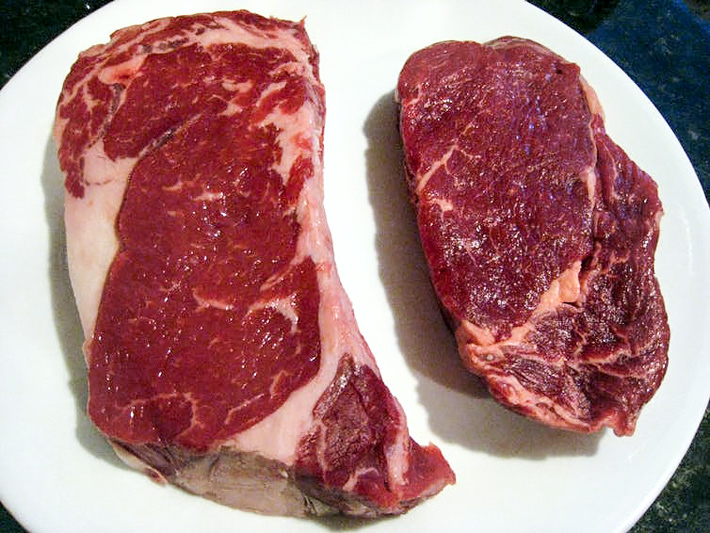
The beef also underwent secondary testing to check if the bacteria in meat were resistant to antibiotics used in human medicine. The results showed that:
- All of the ground beef samples contained bacteria linked to fecal contamination (enterococcus and/or nontoxin-producing E. coli). These can lead to blood or urinary tract infections in humans.
- Nearly 20 percent of the samples contained Clostridium perfringens that’s responsible for nearly a million food poisoning cases in the U.S. annually.
- Ten percent of the samples had a toxin-producing strain of Staphylococcus aureus, which unfortunately, cannot be destroyed even with thorough cooking.
- One percent of the samples contained salmonella that causes an estimated 1.2 million illnesses and 450 deaths in the U.S. per year.
- Three conventional beef samples showed traces of methicillin-resistant Staphylococcus aureus (MRSA), a bacteria strain linked to nearly 19,000 deaths per year. Meanwhile, none of the sustainably raised beef samples contained this bacteria strain.
Grass Fed Beef Nutrition Facts
Take a look at this chart to find out more about grass fed beef’s nutritional value
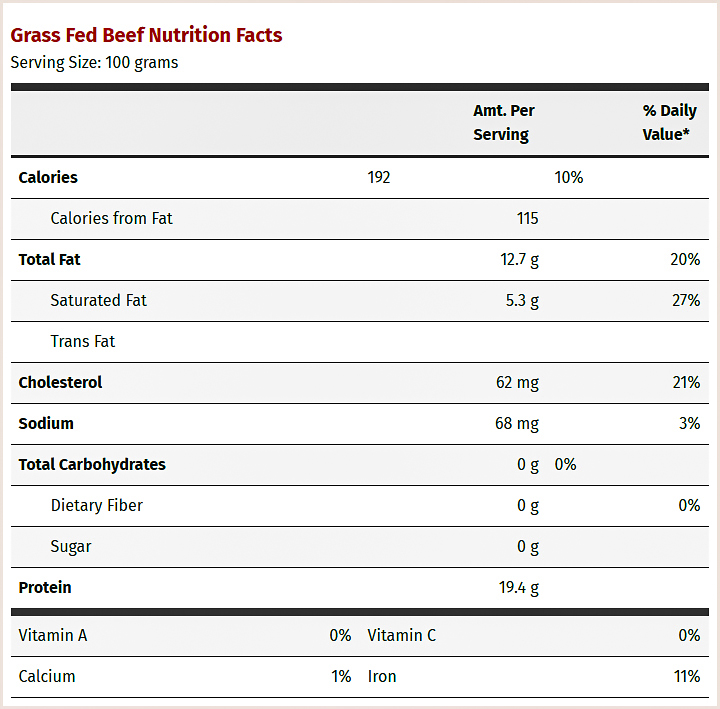
Where Can I Buy Grass Fed Beef?
If you’re worried that you won’t be able to buy grass fed beef in your area, don’t fret. Because of the increasing demand for grass fed beef, more businesses are aiming to provide healthier options for customers.
You can obtain authentic grass fed beef by contacting a trusted local rancher and buying the meat directly from their farm. Many ranchers have smaller and cleaner organic and biodynamic farms where cows aren’t crowded. This leads to a lower possibility of the animals harboring pathogens that can contaminate the meat.
You can contact organic ranchers online as an alternative solution if you don’t have access to a local rancher near you.
There are also grocery chains that have responded to consumers’ demand for grass fed beef, so there’s likely to be a small assortment of grass fed beef at your local grocery store or health store. Some stores like Publix can even stock specialty items at the request of a customer.
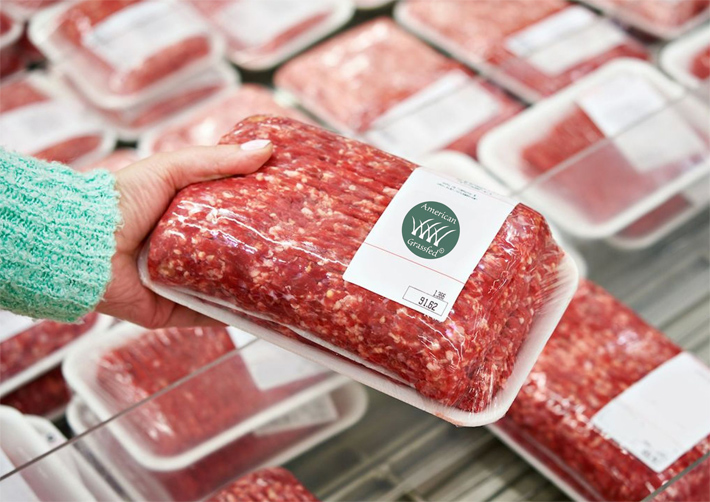
When purchasing beef at supermarkets or groceries, look for products that are certified grass fed by the American Grassfed Association (AGA). Compared to previous standards set by the USDA’s Agricultural Marketing Service (AMS), AGA’s guidelines are more comprehensive and more stringent. The presence of the AGA logo can essentially guarantee that the meat came from cows that:
- Have been fed a 100 percent forage diet
- Have never been confined in a feedlot
- Have never received antibiotics or hormones
- Were born and raised on American family farms, as a vast majority of grass fed meats sold in grocery stores are imported and lack COOL labeling, and there’s no guarantee where the meat came from or what standards were followed
AGA’s grass fed label is considered the most trustworthy, since no other grass fed certification delivers the same comprehensive assurance as this label. Even better, no other grass fed program guarantees compliance using third-party audits like AGA.




Leave a Reply